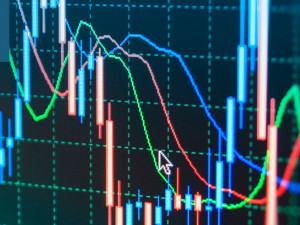
Jobs data last piece of good news
Morning mid-market rates – The majors
16th March: Highlights
- Unemployment Rate below 4%
- Fed to begin tightening cycle today
- Euro under pressure as divergence starts
Avalanche of bad news set to throw the economy off course
Bailey has faced criticism for not being capable of providing the right amount of advance guidance to the markets.
Bailey’s predecessor Mark Carney presided over an interest rate cut just four days before his departure, and then there was another cut in Bailey’s first week in the role. The Bank also raised the level of its asset purchases at the same time.
This earned the Bank plaudits from investors and commentators alike but proved to be something of a high-water mark for Bailey.
Since then, he has faced almost continuous criticism from the market and former colleagues.
The crowning glory of the response to rising inflation came in calling for workers to moderate pay claims to arrest any move towards a prices/wages spiral.
This drew criticism for Union Leaders and the Prime Minister alike.
Today’s meeting of the Monetary Policy Committee is expected to vote in favour of a third consecutive hike in short-term interest rates. Even then, the cycle won’t be at an end. This is leading to questions why, when inflation has been rising at a significant rate, the Committee didn’t start a fifty-basis point hike?
This would have set the tone and would have only affected growth moderately since as the economy emerged from the Pandemic, there was a boost to output baked in.
Central Banks are not designed to be trend setters, but there are occasions where they need to grasp the nettle and turn the ship around.
Yesterday’s delivery of employment data for February may prove to be the last piece of positive news for some time, given the headwinds the economy faces.
The price of oil has topped out for now, with a barrel of Brent Crude currently costing $100.
Average earnings, ex-bonuses, rose from 3.7% to 3.8%, but the claimant count continued to fall, last month by 48k.
The pound clambered to a high of 1.3088 and there are rumors of significant buying interest around the psychologically important level of 1.30. It eventually closed at 1.3042.
Considering your next transfer? Log in to compare live quotes today.
Fed now taking on the role of inflation-buster
Yet, as he chairs another significant meeting of the FOMC this week, he is still not confirmed.
Powell is caught up in a wrangle over President Biden’s nomination for a top regulatory role at the Central Bank.
The name of Sarah Bloom Raskin has not featured in any FOMC decision, but her calls for regulators to more proactively address financial risks related to climate change have angered Republicans and crucially one Democrat. This has led to her facing no choice but to withdraw her name from nomination.
While this is a blow to President Biden, it should open the path for Powell and Brainard to be confirmed in their roles.
The market is as certain as it can ever be that today’s FOMC vote will lead to a twenty-five-basis point rise in the Fed Funds Rate. That news is unlikely to move markets, but Powell’s statement and subsequent press conference will draw significant interest.
Today will mark the start of a process that could take all year to complete.
Several commentators believe that the Fed must start to fix the mess it started. Powell has admitted that his use of the term transitory to describe rising inflation last summer went on too long.
However, the uncertainty caused by lockdowns and the severity of bottlenecks in supply chains were almost impossible to predict.
It will take a considerable time, at least two quarters, for the Fed to make a dent in inflation, and it could be next year before it is back close to the Fed’s 2% target.
Today’s hike could see the dollar fall, although even if the index reaches 97.60, it will remain in an uptrend.
Yesterday’s data saw the producer price index, the cost of goods at the factory gate, rise to 10%. This is seen as a precursor of consumer price increases and is a perfect illustration of the job facing the Fed.
The dollar index corrected its rally from Monday yesterday, falling to a low of 98.63 and closing at 98.98.
Data adds to market fears
The German economy is suffering a significant dampening due to the conflict, and this is first manifesting itself in the virtual collapse of economic expectations. The worsening economic climate is affecting all sectors, and stagflation is now a real possibility.
The ZEW sentiment index fell from 54.3 to -39.3, while the assessment of the current situation fell to -21.4 from -8.1.
The market had expected a read of ten for sentiment.
The numbers for the entire Eurozone were equally shocking, which saw the likelihood of a recession and stagflation grow for the entire region.
Industrial production data which was also published yesterday was also disappointing. It was flat versus an expectation for a slight gain and a previous increase of 1.3%.
ECB president Christine Lagarde spoke yesterday of her belief that despite the conflict, the region will see robust growth this year. She is basing her judgment on expert surveys, which in all probability predate the Russian invasion of Ukraine.
She did temper her remarks by accepting that other scenarios are also possible.
With the FOMC and MPC both now into tightening cycles, the euro is expected to bear the brunt of divergence in G7 monetary policy.
There is a genuine belief that a low of 1.05 could be seen, although more bearish predictions see it at parity.
This will not happen all in one go however, and were the single currency to rally above 1.1040, a minor rally could ensue.
Yesterday, the euro rose to a high of 1.1019 and closed at 1.0954. For now, the 1.10 level looks tough to break conclusively, but if the market decides to sell the fact later today, the resistance could be tested.

About Alan Hill
Alan has been involved in the FX market for more than 25 years and brings a wealth of experience to his content. His knowledge has been gained while trading through some of the most volatile periods of recent history. His commentary relies on an understanding of past events and how they will affect future market performance.”



